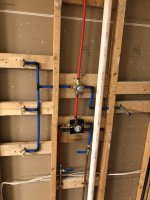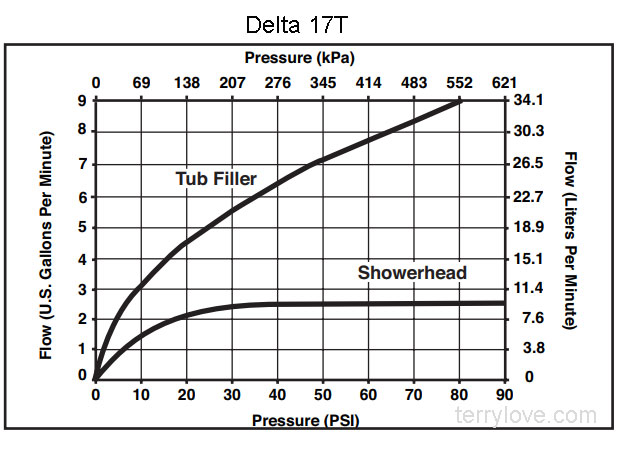While you'll get water out of each, your valve with 1/2" pex (or copper!) supplies will not give you the results you really want IMHO. Whether it will be acceptable to you, can't say. You can exceed the maximum recommendations by the respective pipe manufacturers (on 1/2" copper, the hot should be limited to 4gpm...pex allows it to go faster - 8fps versus 5fps for copper), and the pipe can support a bit more than the recommendations, it comes with consequences:
- flow noises increase
- friction and thus dynamic pressure drops
- especially on copper, you can literally start to erode the pipe from the inside out, especially near fittings or improperly done joints that create turbulence - it can erode fittings on pex as well.
Those recommendations by the Pex and Copper industries are there for a reason - if followed, you won't be disappointed. FWIW, because of the increased opening of a 3/4" pipe, it doubles the flow over a 1/2" line.
I can't say whether you'll be happy with it, but it won't perform as well as it could if your pipes (all the way back to the supply) were larger, and you had a larger valve body. With 1/2" pex feeding the three body sprays, they want 6gpm based on what you said, and the industry says the pipe shouldn't be used for more than 4. Something has to give. It will be sort of like the outlet of a hose with and without a nozzle on the end...it needs a restriction in what's available to accelerate the flow....think thumb over the end of a hose...same volume, but the spray goes further. Too many outlets, there's not enough volume to keep up max capacity.
A secondary part to all of this is that it can take a massive hot water tank to run it at full blast for very long. A drain water heat recovery system can help minimize that load if you have the vertical drop available and are willing and able to replumb things to accommodate one.


